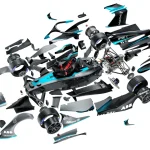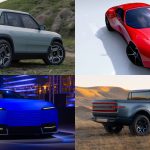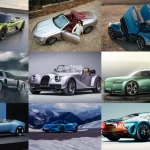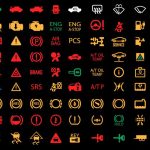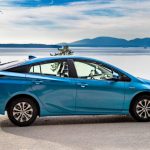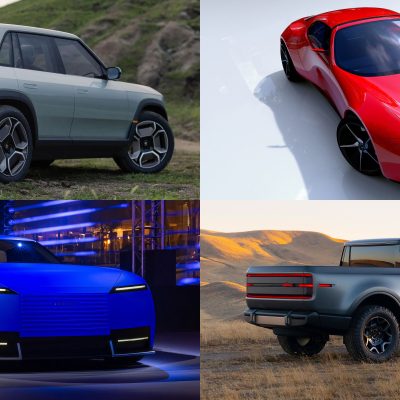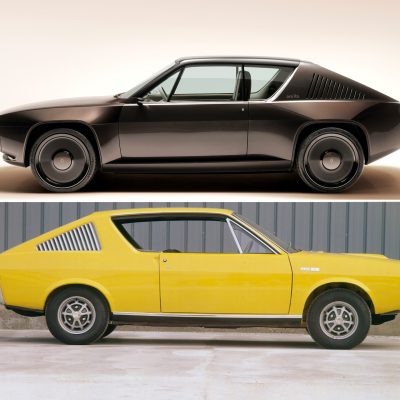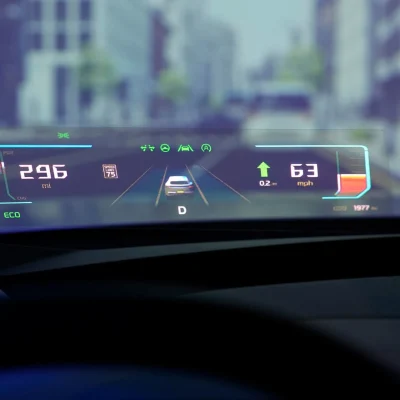For over a century, BMW has built its reputation on the “Ultimate Driving Machine” mantra — delivering driving pleasure with surgical precision, stylish aggression, and relentless innovation. But as we drift toward a future defined not only by performance, but by sustainability, software, and digital lifestyles, BMW is not standing still. It’s evolving.
The Bavarian automaker’s vision for 2030 is bold and sweeping — a complete transformation of what a BMW is, how it’s made, how it moves, and how it connects with you. And that vision is best understood through its concept cars: rolling sculptures that preview a very different, yet unmistakably BMW, tomorrow.
Let’s peel back the layers on the machines that are defining BMW’s future.
The Neue Klasse: A New Era for BMW
The beating heart of BMW’s 2030 strategy is the “Neue Klasse” — a next-generation platform that will underpin its electric vehicle fleet. It’s not just a chassis or a battery pack. It’s an entire ecosystem, a new philosophy.
Neue Klasse cars are designed to be:
- Fully electric, ditching combustion entirely
- Digitally intelligent, with expansive touch and gesture controls
- Sustainably produced, embracing recycled and recyclable materials
- Visually clean, inspired by the minimalism of Bauhaus and modernism
It’s as if BMW is returning to its roots to reimagine its future. The original Neue Klasse of the 1960s saved the company and set its sporty, premium DNA in stone. This new iteration might just do the same in an era of climate crisis and software-defined cars.
BMW Vision Neue Klasse: The Flagship of the Future

This is more than a concept — it’s a statement.
The Vision Neue Klasse is the spiritual and technical flagship of BMW’s 2030 ambitions. With its crisp, clean bodywork and monolithic surfaces, it ditches unnecessary frills in favor of design purity. Every line is deliberate. Every panel, purposeful.
Exterior Design:
The kidney grille is reinterpreted into a digital surface, combining function with brand identity. It serves as a lighting and sensor hub. The body has the athletic proportions of a classic BMW — low nose, long wheelbase, tight overhangs — but everything is smoother, simpler, and more aerodynamic.
Interior Experience:
Inside, you’re greeted by a completely new interaction model. The traditional cluster is gone. Instead, a sweeping digital interface spans the base of the windshield — BMW calls it the Panoramic Vision. All major driving and infotainment info is projected in your eyeline.
Physical buttons are nearly extinct. Haptic feedback surfaces, voice interaction, and gesture controls dominate. It’s less like sitting in a car and more like entering a high-end digital studio on wheels.
Performance & Tech:
This concept rides on a next-gen electric platform with sixth-generation BMW eDrive motors and new cylindrical batteries — expected to boost range by up to 30% compared to current models. Fast charging, intelligent thermal management, and seamless software integration make this a glimpse into a truly next-level EV.
And yet, despite all the tech wizardry, this still looks and feels like a BMW — taut, composed, and driver-oriented.
BMW i Vision Dee: Where Digital Meets Emotion
If the Neue Klasse is BMW’s EV foundation, the i Vision Dee is its digital soul. This concept is all about the relationship between human and machine — redefining how we interact with our cars, and how they interact with us.
“Dee” stands for “Digital Emotional Experience.” And that’s not marketing fluff.
The exterior of the car can actually change color — using E Ink panels that shift between 32 hues in real time. It’s not just a party trick. It’s personal expression on a rolling canvas.
Step inside, and the windshield becomes a Mixed Reality display. Via a “slider,” you can choose how much digital content overlays your view — from minimal driving data to full-blown augmented reality. Want navigation floating in space ahead of you? You got it. Want to turn the cabin into a virtual meeting room? Done.
Dee also communicates using voice, facial expressions (via light patterns), and even emotions. It learns from your behavior, adjusts its personality, and builds rapport. Sci-fi? Maybe. But it’s happening. Fast.
This isn’t a car. It’s a companion.
BMW Vision M NEXT: Electrified Performance with a Soul

Not all future concepts are about soft surfaces and gentle guidance. Some are loud. Bright. Focused. Enter the Vision M NEXT — a vision of how BMW’s performance M division might evolve in a future driven by electrons, not pistons.
Think of it as the heir to the M1 supercar, filtered through a 2030 lens.
Aesthetics:
Sharp lines, layered surfaces, and a wedge profile give it a distinctly 70s-retro-futuristic vibe. The color palette is intentionally audacious — bright orange accents pop against metallic silver bodywork.
Hybrid Powertrain:
It’s not fully electric — this is a plug-in hybrid designed to let you choose. Want electric silence? Drive in rear-wheel EV mode. Want all-out performance? Activate both the turbocharged four-cylinder and dual electric motors to unleash 600+ horsepower.
BMW calls the dual driving personalities BOOST (you’re in control) and EASE (the car handles more). This duality — human and machine — echoes through every inch of the M NEXT. It doesn’t just look fast. It thinks fast.
Driver-Centric Tech:
A “Boost Pod” cockpit puts the driver in command. Think curved displays, AR overlays, biometric sensors that read your heart rate and focus level. This is less about raw numbers and more about how deeply the car responds to you — physically and digitally.
The Common Threads: What BMW’s 2030 Concepts All Share
Despite their different purposes — one is a flagship sedan, another a tech demonstrator, another a supercar — BMW’s vision concepts share a clear DNA. Here’s what’s recurring across all of them:
1. Sustainability as Standard
BMW is making circular design a central tenet. These cars are made from recycled metals, bio-based materials, and future-proof architecture. Even the batteries are designed for disassembly and reuse.
2. Digital-First Philosophy
Screens aren’t slapped on — they’re baked into the very shape and experience of the vehicle. Software is king. Voice, gesture, AR — it’s all seamlessly integrated to reduce friction between you and the machine.
3. Driver Engagement Reinvented
You might not be shifting gears or hearing an engine note in quite the same way — but BMW is doubling down on emotional connection. Through haptics, visuals, modes, and customization, they’re reinventing what “driving pleasure” means.
4. Modular Platforms, Infinite Potential
All these cars use scalable platforms. That means more models can be made faster, with better cost efficiency, and flexible tech upgrades. From 3 Series to X7, this stuff will trickle down.
BMW in 2030: What You Can Actually Expect

Concepts are exciting, but what does it mean for real cars you’ll be able to buy?
By 2030, you can expect:
- At least half of all BMWs sold to be fully electric
- Neue Klasse-based EVs across multiple segments, starting in 2025
- A standard digital dashboard with Panoramic Vision and iDrive 10+
- AI-powered driver profiles and adaptive cabin settings
- Recycled, sustainable interiors that still feel premium
- Optional mixed reality windshields for navigation and media
- OTA (over-the-air) upgrades that evolve your car over time
- Electrified M models that are brutally fast and digitally smart
The line between machine and experience will blur. Your BMW won’t just drive well. It will live with you — learning, adapting, even expressing emotion.
Final Thoughts: From the Autobahn to the Algorithm
BMW’s 2030 vision isn’t just a collection of futuristic prototypes. It’s a roadmap.
And what excites me most isn’t the touchscreen-laden dashboards or the color-changing paint (though, let’s be honest, that’s cool too). It’s the fact that BMW is still chasing joy. Still obsessed with driving. Still sculpting its future not out of fear, but out of passion.
Yes, there are challenges. Purists may miss the roar of an inline-six or the tactile joy of a manual shifter. But new thrills await. New sensations. New forms of connection between human and machine.
In 2030, when you slip into your BMW — whether it’s a minimalist Neue Klasse sedan, a vibrant i Vision Dee commuter, or a vicious electric M car — it won’t just start.
It will greet you. Learn from you. Adapt to you. And maybe, just maybe, inspire you to take the long way home.
Because even in the age of algorithms, driving pleasure still matters. And BMW knows it.

